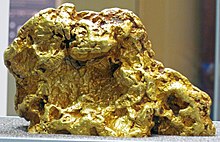New Delhi, Oct 31: Central Banks Gold is a reserve asset held by Central Banks across the world. The International Monetary Fund (IMF) classifies gold holdings as part of a nation’s foreign reserves. It releases a monthly report of central bank’s reserve holding worldwide.
Gold is hybrid – part commodity and part currency, especially for Banks. Their reserve can also be a reason behind success and failure of Banks. Almost 1/6th of the gold extracted, is currently inherit by the central banks all over the world.
But why do central banks buy gold?
It’s for the same reason as we buy it for – sense of safety and an ability to start all over, if the system collapses. This yellow metal gets least effected by the dynamics of the economy or inflation.
After 2010, for the first time, central banks gold of Uzbekistan and Turkey sold on sale in the third quarter of 2020. Russia’s central bank also reported selling of gold after 13 years. In the current situation due to pandemic, the market demand for gold has been declining (fell 19% year-on-year; lowest since 2009 in the last quarter), mainly due to downfall in demand of Indian and Chinese jewelry. Though the investors are pulling up the demand in the form of Gold bars and coins, the same is not enough to offset the total loss. The supply of gold remains subdued as the mine extraction is still limited.
Was this a great information? Want to know why do we keep money in banks? You can connect with us for more such informative content on Facebook, Instagram, LinkedIn and our Twitter handles.

